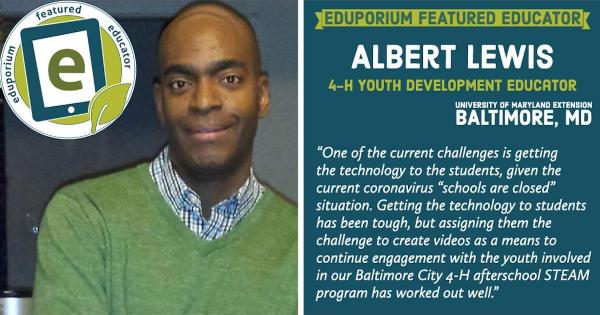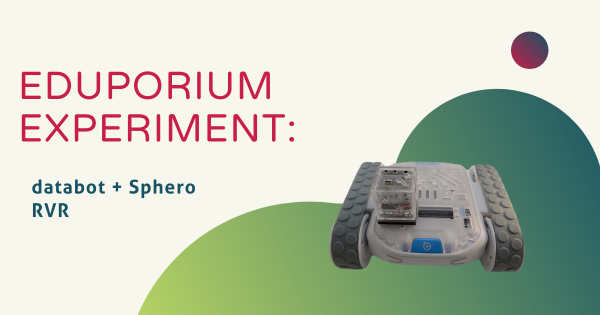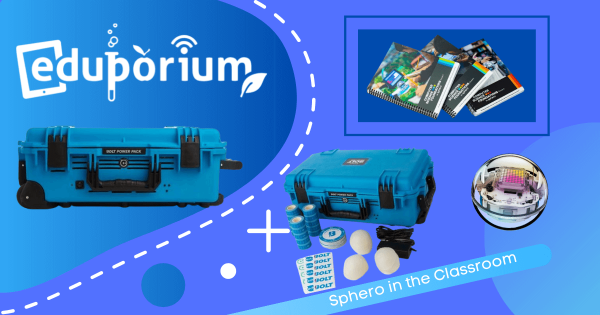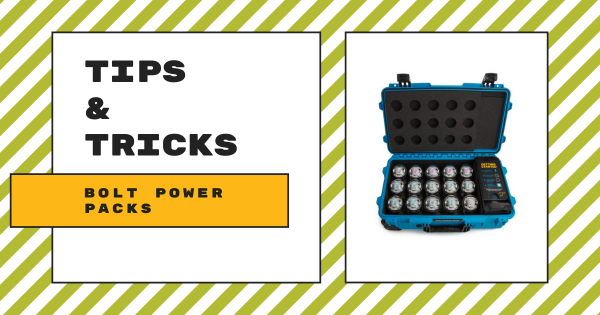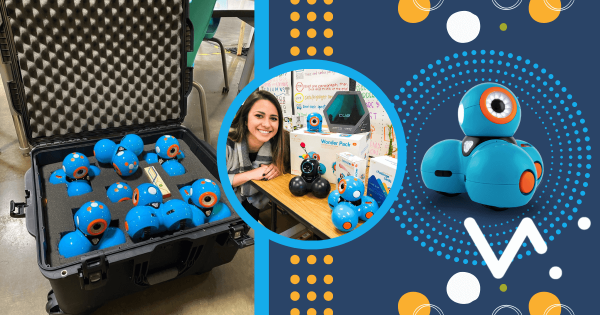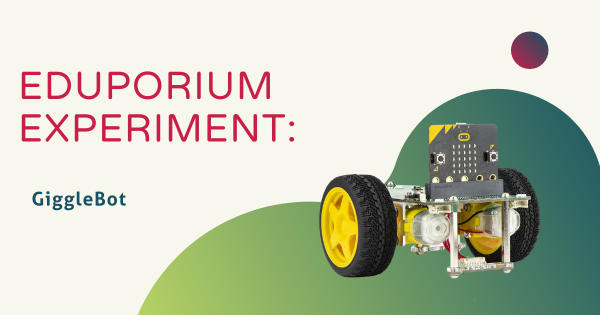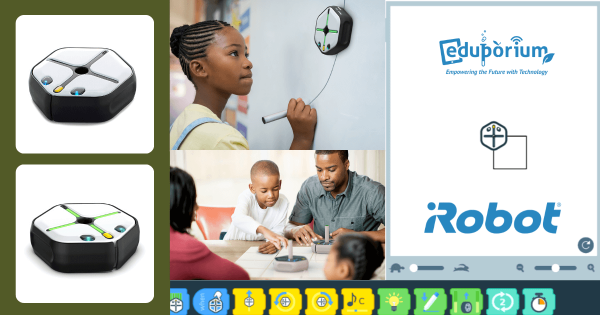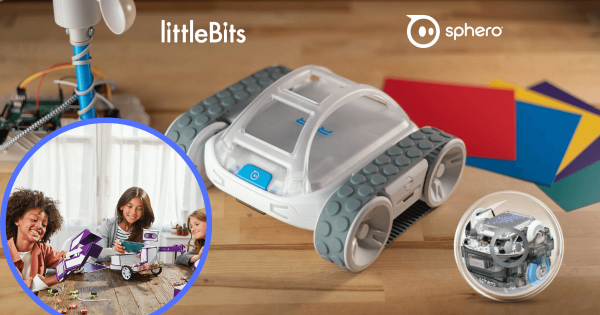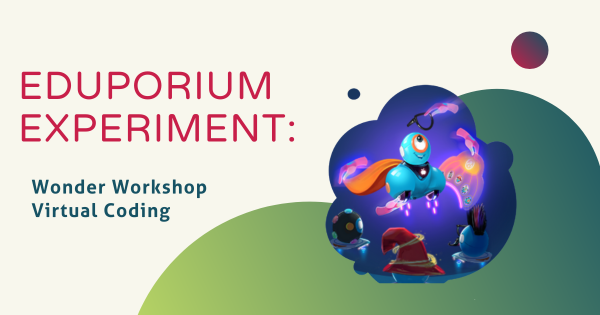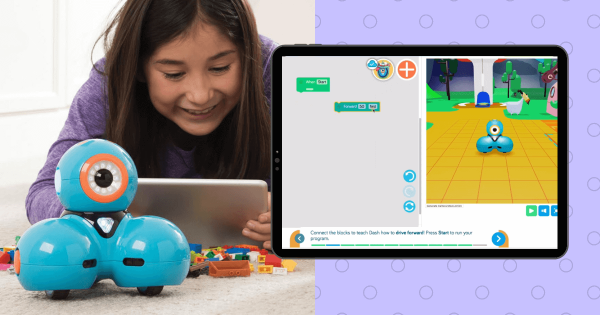We spoke with Albert Lewis! Albert works with students in the 4-H Youth Development Program as part of the University of Maryland Extension in Baltimore City. He loves using STEM to connect with the students he works with and, even in the midst of the coronavirus pandemic, he’s helped them find creative ways of using technology in their learning.
Robotics
Some of the most popular paths and effective approaches to preparing students for their future involve using robotics tools. A significant subsection of STEM education, coding robots and other types of programmable devices enable a large percentage of the STEAM learning that occurs in our schools. Using educational robotics tools, students from Pre-K to college can develop key coding skills. This is largely because, among these various robot kits, many are compatible with various programming languages. So, beginning in Pre-K, a child might use the Cubetto Robot in screen-free coding activities. Then, they might move on to the Bee-Bot or Blue-Bot for CS experiences that are slightly more complex. And, by the time they're in kindergarten or first grade, they have a legitimate foundation and they're ready to continue developing fluencies in coding, problem solving, and even computational thinking.
One reason robotics in education is so effective is due to various advances in robotics equipment for schools. Beyond introducing the absolute basics of coding early on (and without a screen), students can then progress to one of the most basic forms of coding, which you might know as Blockly. So many robotics tools incorporate the Blockly coding language along with their corresponding programming environment. In fact, the Ozobot Evo, Root Robot, Edison Robot, and Dash Robot are among the most popular elementary robotics tools. These help children build on coding and technology knowledge as they prepare for the next step—text programming. In text coding, they can use tools like the databot 2.0, NAO Robot, and most of the others we've mentioned. And, through these experiences, they can develop STEM skills in a tangible way while using robotics tools to do so.
-
Eduporium Experiment | databot And The Sphero RVR
The databot is a small, programmable robot outfitted with an array of built-in sensors that are constantly capturing real-world data. Students can use this data to create programs for the small, cube-like databot to execute. It works with the Google Science Journal platform, but the databot Robot is also compatible with another powerful STEAM tool: the Sphero RVR! -
New Sphero BOLT Accessories: Power Packs, PD, And More
Whether teaching computer science lessons using the Sphero Mini, BOLT, or RVR, Sphero’s robotics solutions open up a whole lot of possibilities for computer science education. You can also try taking your STEAM teaching and learning further and pair the robots with the corresponding curriculum, Sphero’s CS Foundations Courses, which are now available on our store! -
Tips & Tricks | Sphero BOLT Power Packs
The BOLT Power Pack was adapted from the SPRK+ Power Pack except it now supports charging the Sphero BOLT. It holds 15 BOLTs and is available as an all-inclusive set with robots and accessories (charging cradles/cables, protractors, turbo covers, maze tape rolls, and stickers) and also as an empty pack for those who already have BOLT robots. -
Guest Blog: Coding, Standards, and More from Jasmine Saab
Jasmine teaches all subjects, so this allows her to create some pretty fun, cross-curricular lessons. These types of lessons make it possible for her to teach her students all about interesting and relevant subject area content while also introducing them to the world of computer science and coding—and some of her favorite tools to use are the Dash, Dot, and -
Eduporium Experiment | Building The GiggleBot Robot
The GiggleBot is a robot that’s powered by the micro:bit V2 and perfect for the classroom, makerspace, and remote learning. If you’re familiar with the micro:bit, this little computer is truly able to help educators expand coding education and, when paired with this device, the GiggleBot system brings coding to life for curious elementary and middle school students! -
Helpful Updates For Teaching Coding With The Root Robot
Starting in early elementary, students can use the Root Robot to try block coding, move onto hybrid coding in upper elementary and middle school, and then use it to learn text coding in upper middle and high school. Since teachers and students now find themselves navigating remote learning, its newest features help make the Root even more appealing. -
Find Sphero And littleBits Kits, Accessories, And More Here
In case you missed it, the shift with the former STEAM supplier, littleBits, to Sphero now seemingly came full circle. Last week, social media posts from all of the former littleBits channels indicated that everything would soon be moving over to the Sphero channels and, a little bit earlier this week, that’s exactly what we saw happen as this merger -
Eduporium Experiment | Wonder Workshop Virtual Coding
While much of teaching and learning is now taking place outside of the typical classroom setting, Wonder Workshop has remained committed to creating solutions that are easy to access, learner centric, engaging, trackable, and provide parents with the knowledge and tools to assist their children while learning at home. Learn about the virtual Dash here! -
Keep Coding Active with Wonder Workshop's Class Connect
Teachers miss their students. Graduations and proms have been cancelled. Most students already know they won’t be in a school again until (at least) the fall. It’s seriously strange, but, like all of us, we’re trying to make this period of time as normal and productive as possible. That’s why we’re very excited to share more about what they’ve been




